I dove in two areas on Borneo. The first was the world famous island of Sipadan and the two surrounding islands of Mabul and Kapalai. The second was in Borneo, where I experienced probably the best wreck dive of my life, which is the last series of videos at the bottom of this post.
Sipadan
Sipadan is a small island off the coast of Malaysian Borneo with some of the best diving in the world. In 1989 Jacques Cousteau said of it: “Now we have found an untouched piece of art.” And it is still relatively untouched. In 2004 the Malaysian government asked the few resorts on the island to leave. Now only 250 people per day are allowed to visit its waters, including divers, snorkelers and dive guides.
We stayed in the nearby island of Mabul and made the short journey over every morning. When you arrive you have to check in and show the Malaysian authority a copy of your passport and diving certification card. The Malaysian authorities will do spot dives; if they see anyone touching or taking anything the diving for that group is immediately cancelled for the day, both the guests and the tour company have to pay a fine, and there is the potential the tour company could be banned for a period of time.
Because of these precautions the coral is extremely healthy and the sea life is diverse and abundant. It’s considered one of the top dive spots in the world, and one of the most expensive because of the high park fees. It is located at the heart of the Indo-Pacific basin, the center of one of the richest marine habitats in the world. More than 400 species of fish and hundreds of coral species have been classified in this ecosystem. As you can see from the videos, it’s an amazing place. I really enjoyed it and fully expect to come back in the future.
The island itself is a 600 meter (2,000 foot) volcanic mound covered with coral growth. The sand is formed from a millennium of parrotfish eating coral and pooping out sand.
I stayed at Scuba Junkie’s dive resort on nearby Mabul Island. They run an incredible operation. Per Wikipedia Scuba Junkie was voted by the public the “Best Dive Resort in the World 2020” at Dive Magazine’s annual Dive Travel Awards.
Looking at the lounge and diving area of the Scuba Junkie resort on Mabul.
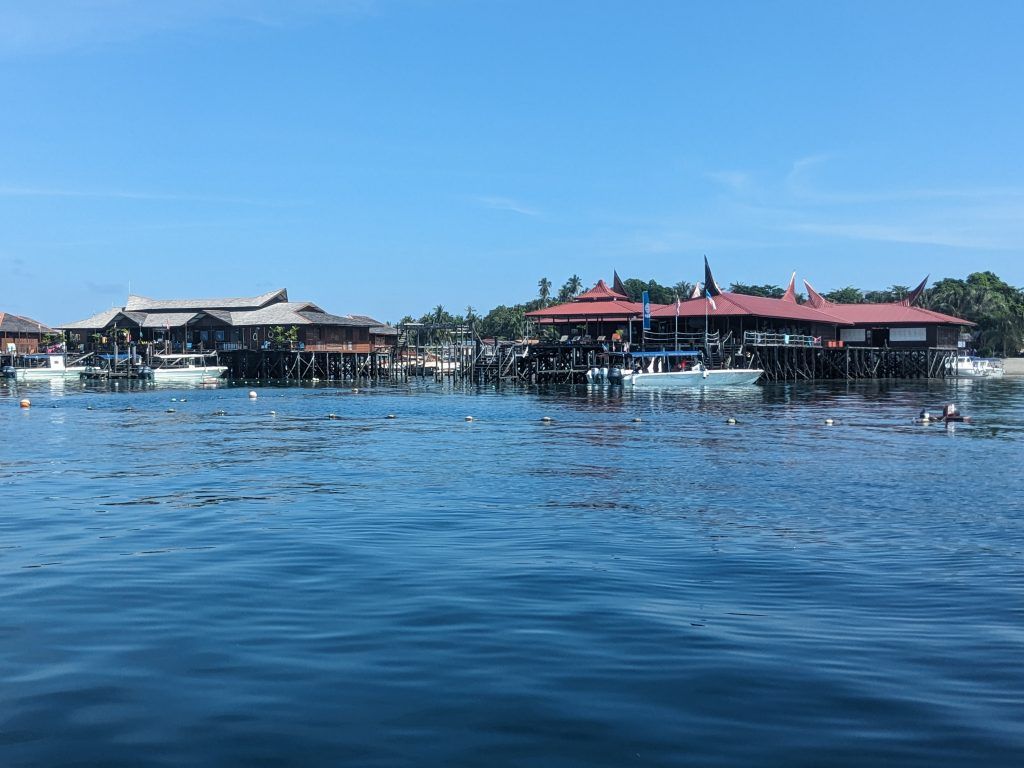
The main lounge area where everyone relaxed in when not diving.
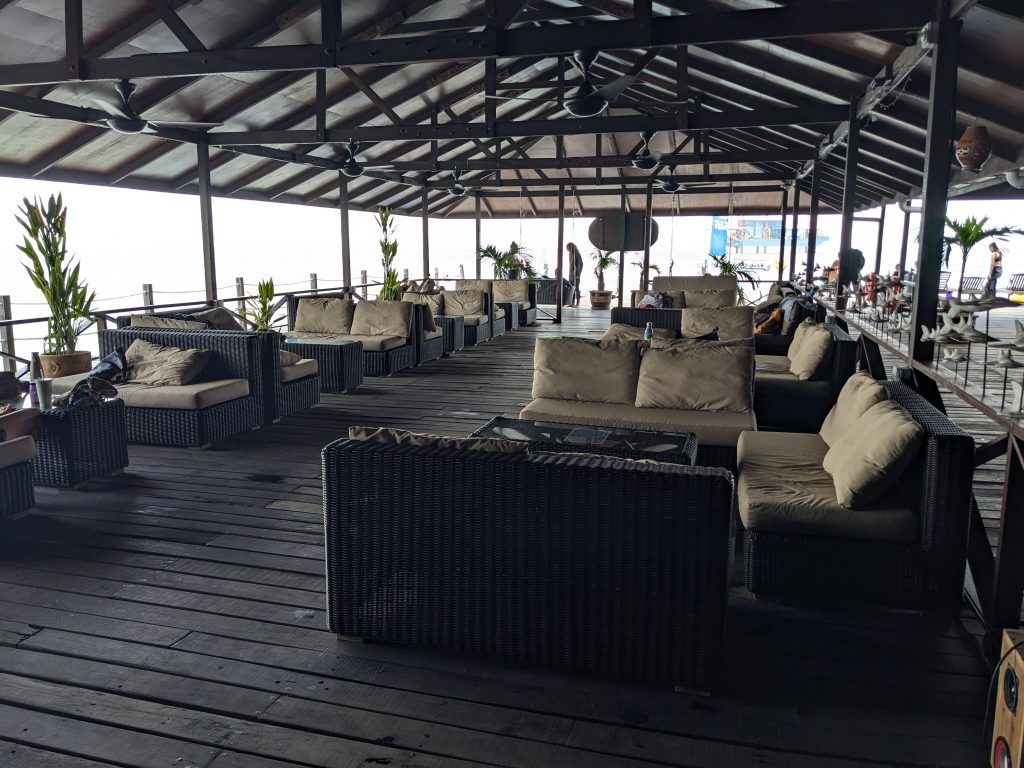
The jetty from the lounge and diving area to the beach.
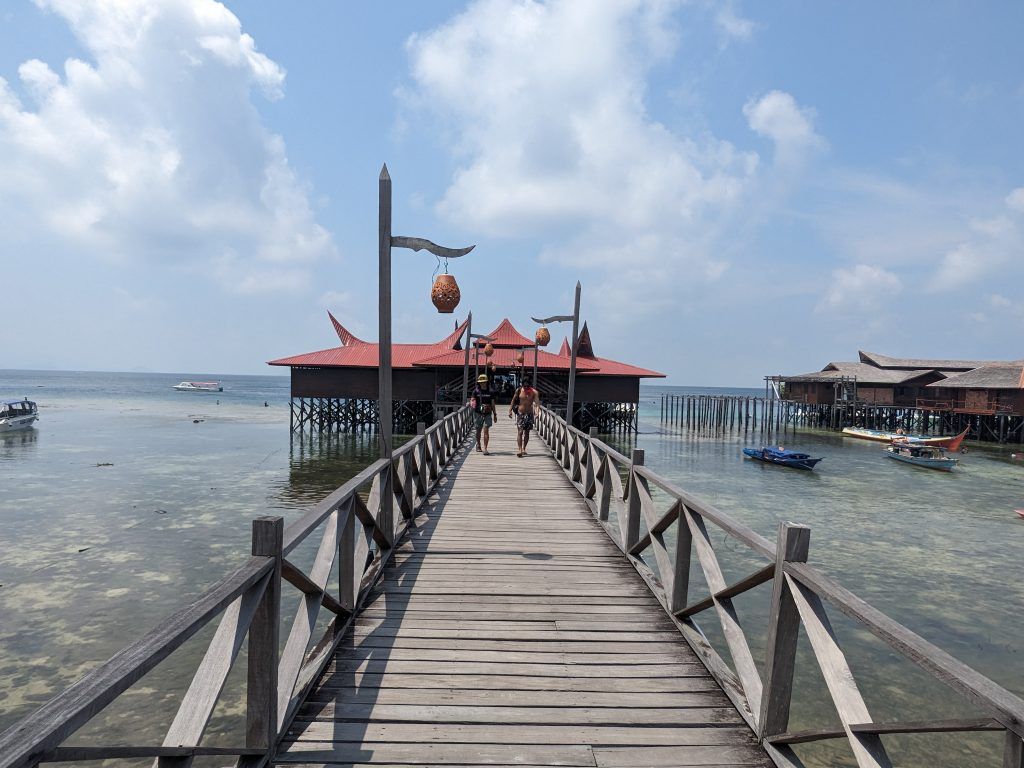
The rooms and the restaurant were on the main beach.
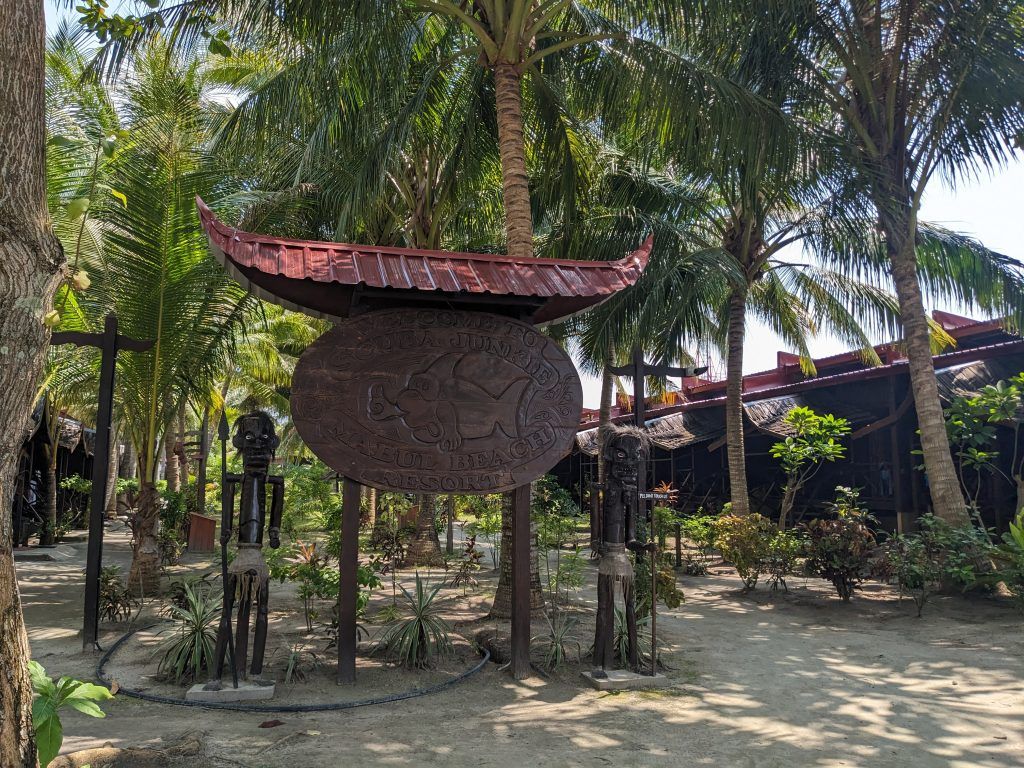
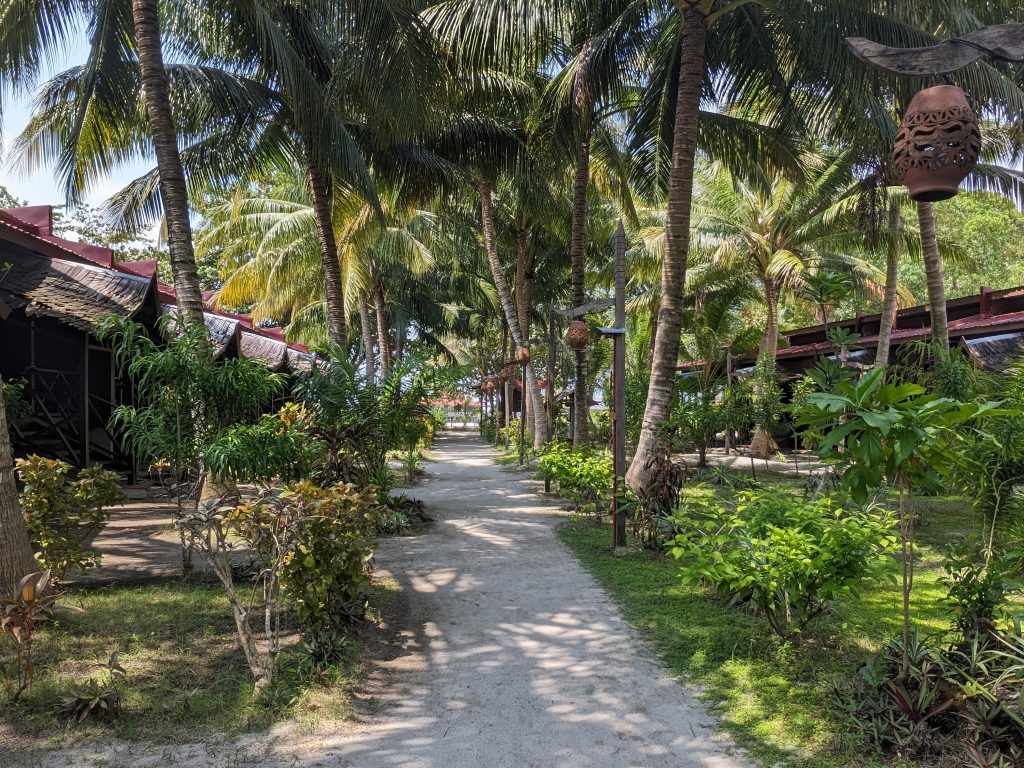
The majority of Mabul Island’s residents are immigrants from a chain of islands in the southern Philippines who came in the 1970s. They are really poor, strew their trash everywhere and I’ve been told relations with them and the dive resorts on the island aren’t the best.
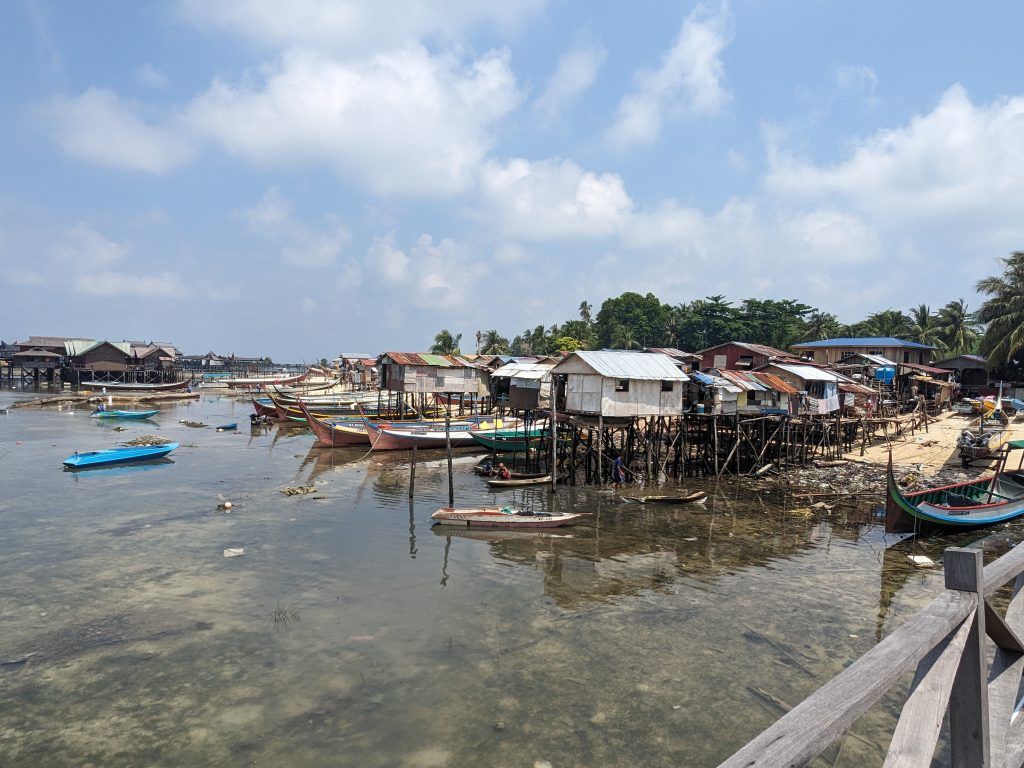
The small island of Sipadan where only a small section is open to divers and snorkerlers between their excursions in the water.
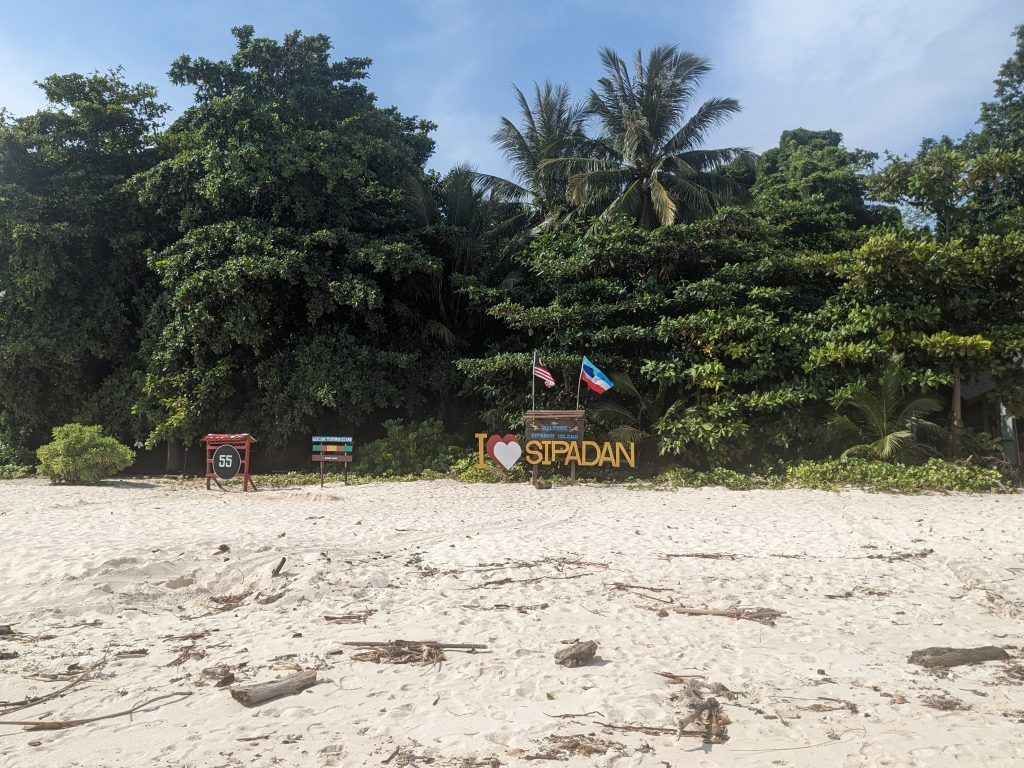
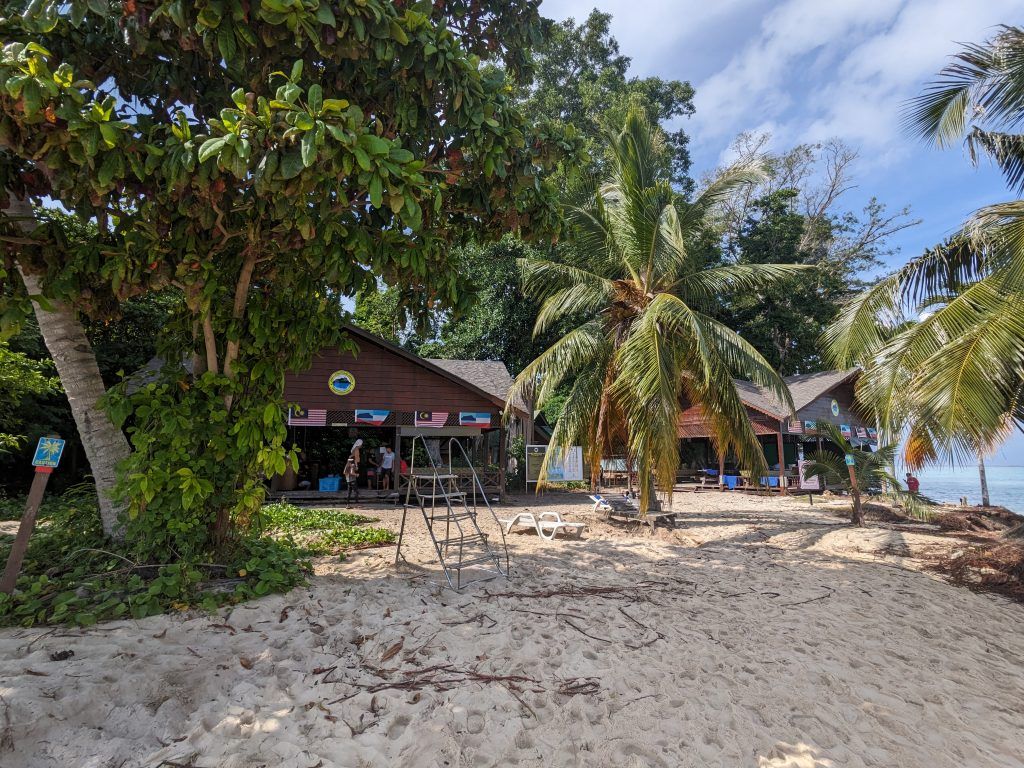
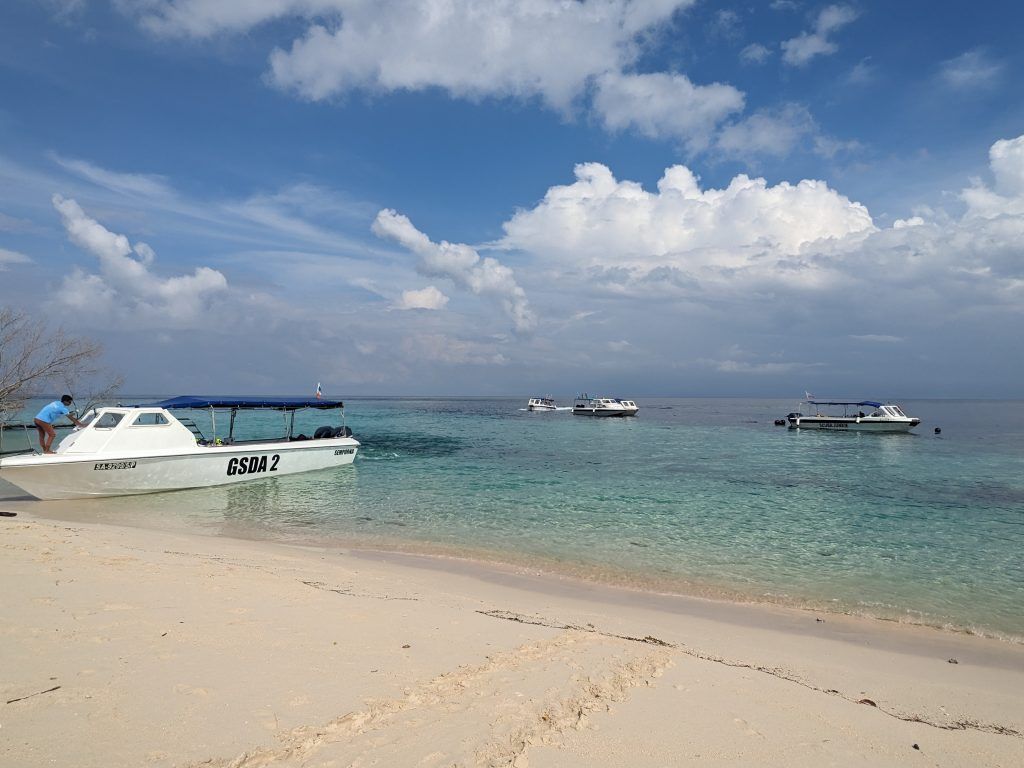
The small sand atol of Kapalai where we did our third dives after our two Sipadan dives each day.
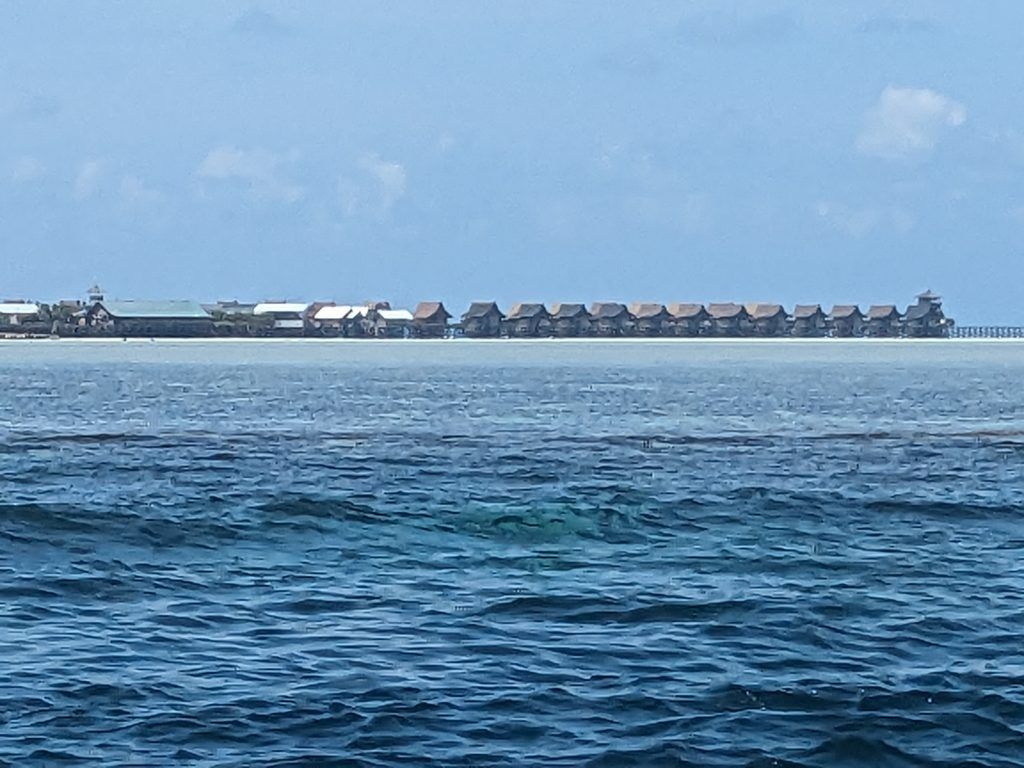
Sipadan Diving
The most amazing thing about Sipadan is the rich coral and sea life.
Both days on our first dives we jumped in just as a small school of wonderfully descriptively named bumphead parrotfish swam by.
And, on the first day, right after the bumphead parrotfish we saw a nice school of jackfish and a predatory trevally fish swim through them as they made way.
We saw a score of reef sharks on one of our dives; the most unique site was a handful of them hanging out on the bottom.
Each dive we’d spend 15-20 minutes going out into the “The Blue” to try to see larger fish, especially hammerheads. We were shut out on each of our four dives, but it was pretty cool to be out in the depths and see small, clear invertebrates float pase.
One section was called the Hanging Gardens because of all the treelike coral hanging off a steep wall.
We saw some yellow barracuda at a site called Barracuda Point.
Kapalai Diving
Since we were only allowed to dive twice a day at Sipadan, we did our third dives at nearby Kapalai, which was a nice location in its own right. Most of the action here was in small bottom creatures, but there was still a nice reef to swim through.
As I mentioned, the stars of Kapalai were it’s smaller creatures, especially this cute boxfish.
The color camouflaging choices of these two stonefish were fascinating to see.
In the span of about 5 minutes I saw 3 types of eels.
Mabul Island
The first day we did 3 dives on Mabul Island. There was mostly nice small life here. The problem was there was also a shocking amount of trash underwater from the sloppy habits of the Mabul islanders.
We saw a ton of turtles on these dives at all 3 locations. This one may have been the biggest.
There was a small wreck site at Mabul with some prolific marine life swimming around the area.
It’s fascinating how this frogfish changed its colors to match its surroundings.
Pipefish are related to seahorses, but much more bizarrely shaped.
Definitely the largest of a multitude of nudibranches we saw.
You can barely make out this fish’s crocodile shape as it sits on the bottom middle of the screen.
A cute, small baby clownfish swimming around a rock.
Diving in Brunei
I was able to do three dives on my second day in Brunei. I wasn’t sure what to expect and I discovered that it’s know for its world class wreck diving, with over 30 wrecks in the area. Of the three wrecks we dove, two were very good and the third – the MV Dolphin 88 – was the best wreck dive I’ve done to date.
The first dive was at the 94-meter long Australian Wreck. Initially without formal identification and just presumed to be a warship sunk by the Australian Airforce (hence the name), it turns out she was originally the commercial passenger ship SS De Klerk, requisitioned and converted by the Imperial Japanese Navy to the notorious hell ship Imaji Maru. As the tide of war was changing against the Japan, Imaji Maru made a run from Singapore to Manila with a quick stop in Brunei when she fatally hit, ironically, one of the Japanese marine mines. Three hundred thirty-nine souls perished with her, mostly POWs, laborers, comfort women and a few Japanese soldiers.
It had rained hard all the day before, so the water visibility wasn’t very good and at almost 30 meters deep, the wreck had an eerie feel to it in the diminished clarity. The object at the end of the first video was actually a toilet bowl 🙂
The second wreck we dove the American Wreck also had an interesting WWII story. The ship is a decorated World War II veteran minesweeper. Known as the USS Salute AM-294 while in service, she was often with the advanced invasion force that preceeded the Allied landings in the Pacific War theater. Notably, she partook in several liberation campaigns, including the biggest naval battle in history—the Battle of Leyte Gulf. Her last assignment was to lead her division in the pre-invasion clearing of the coast of Brunei, where she ultimately succumbed to an unsuspecting mine. The mine exploded in her underbelly amidships, violently tearing her hull in two. As a result, the wreckage is in tatters, with the torn forward hull sitting partially over her stern hull.
One of the most famous features of this dive is the still almost intact gas mask laying among the wreckage.
You can see scores of bullet casings in the first part of this video.
There’s an abundance of sea life around the wreck including a nice school of juvenile yellowtail barracudas.
The final wreck – the MV Dolphin 88 – was the most spectacular. It definately had a handful of really nice swim throughs. What made it special was the insane abundance of fish. At some points there were so many they covered almost the entire wreck. It was a sight to behold.
This wreck also had an interesting history. The MV Dolphin 88 was a Malaysian barge carrying a shipment of stones through Brunei waters when it hit bad weather and sank off Pelong Rocks in 2013. The ship split in half, with the back half sinking to a depth of 24 metres (78 feet). All 11 crew members were rescued. Below is a picture taken as the barge was slowly sinking.
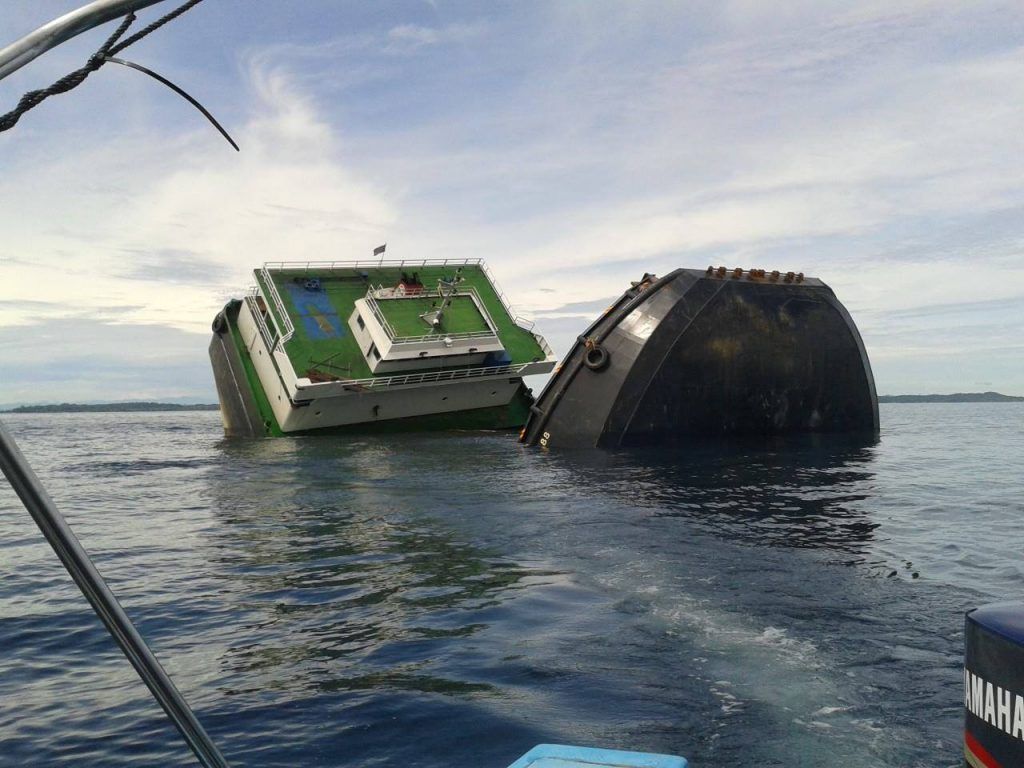
Unfortunately, the visibility wasn’t that great. But hopefully you can still get a sense of just how many damn fish there were, and how much fun the swim throughs were.
